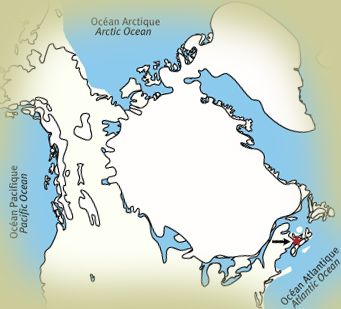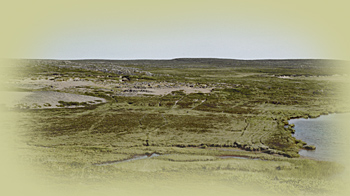|
First Peoples >
An Aboriginal Presence >
Our Origins >
Archaeology >
As the World Took Its Present Form >
Debert (Atlantic Canada, 11,000 years ago)
|
|
|
An Aboriginal PresenceOur OriginsArchaeology - As the World Took Its Present FormDebert (Atlantic Canada, 11,000 years ago) - Southern Atlantic Canada was just emerging from glacial ice about 11,000 years ago. The earliest human occupations in the region date from this period. The largest and best-known archaeological site is Debert, in central Nova Scotia. At the time it was occupied, Debert was probably within sight of a nearby glacier. The site consists of a number of buried hearths and scatters of stone tools. No animal bones survived because of acidic soil conditions; however, the analysis of blood residue from a spearpoint found at the site indicates that people hunted caribou. Similarities in the styles of stone tools reveal a close cultural connection between the people living at Debert and other people living elsewhere in North America at this time. Archaeologists call these early North Americans Palaeoindians, which means "ancient Indians". 
Extent of glaciation, 11,000 years ago
Debert (Atlantic Canada, 11,000 years ago) Grant Lake (west of Hudson Bay, about 8,000 years ago) Kettle Lake (High Arctic Canada, 4,500 years ago) | ||
